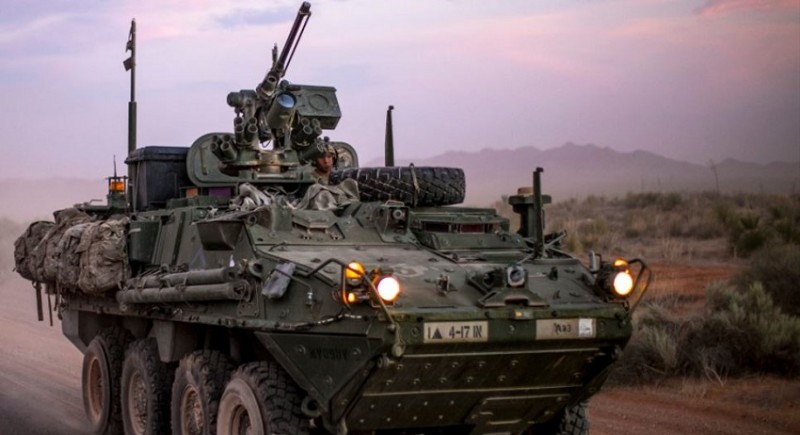
India and the United States are in advanced discussions to jointly manufacture the latest generation of Stryker armored infantry combat vehicles (ICVs). This collaboration is part of their broader defense-industrial cooperation roadmap and aims to boost India's defense capabilities while supporting the "Atmanirbhar Bharat" (self-reliant India) mission.
Three-Phase Project Plan
The Indian Defense Ministry is examining a three-phase plan for this project. The first phase involves a limited off-the-shelf purchase of Strykers through the US Foreign Military Sales (FMS) program. The second phase focuses on joint production in India, and the final phase aims for the co-development of future versions of these vehicles.
Meeting Indian Army's Needs
The Stryker vehicles will be customized for Indian terrain, including high-altitude areas like eastern Ladakh and Sikkim. This customization will incorporate existing capabilities of India's infantry combat vehicles (ICVs) and strive for significant indigenization. The Indian Ministry of Defence is evaluating the plan to ensure it meets the operational needs of the Army's mechanized infantry battalions, with technology transfer to an Indian partner, whether a public sector undertaking or a private firm.
Strategic Promotion by the US
The US is actively promoting this project as part of its expanding defense partnership with India. US Secretary of Defense Lloyd J. Austin highlighted the importance of co-producing armored vehicles with India during the Shangri-La Dialogue in Singapore. This collaboration underscores the strategic importance of the US-India defense relationship, which has secured defense deals worth around $22 billion since 2007.
Indian Army's Advanced Requirements
The Indian Army seeks advanced wheeled and tracked ICVs to replace its over 2,000 Russian-origin BMP-II vehicles. While the Army also requires amphibious ICVs, Strykers are not designed for amphibious operations. Nevertheless, the Defense Ministry is pursuing indigenous projects to address these needs.
Technical Specifications of the Stryker
Developed by General Dynamics Land Systems, the Stryker is an eight-wheel-drive combat vehicle equipped with a 30 mm cannon, a 105 mm mobile gun, and bolt-on ceramic armor for enhanced protection. Powered by a Caterpillar C7 engine with 350 horsepower, it has a range of 483 kilometers and a top speed of around 100 km/h. The Stryker is designed to withstand improvised explosive devices (IEDs) better than other light military vehicles and can be transported by Chinook helicopters, which the Indian Air Force uses.
Variants and Global Deployment
The Stryker family includes various configurations such as Infantry Carrier Vehicle (ICV), Mobile Gun System (MGS), medical evacuation vehicle, fire support vehicle, anti-tank guided missile carrier, and reconnaissance vehicle. These vehicles are valued for their speed and flexibility, particularly in urban warfare and quick response scenarios. The Stryker has seen action in Afghanistan and is currently used by Ukraine in its conflict with Russia.
Enhancing India's Defense Manufacturing
The potential joint manufacture of Stryker vehicles between India and the US represents a significant step in defense cooperation. This initiative aims to bolster India's self-reliance in military production and modernize its defense capabilities. If the project proceeds, it will mark a milestone in India's defense modernization efforts, ensuring the Indian Army is equipped with advanced and indigenously produced combat vehicles.
How Stryker Armored Combat Vehicles Work
Stryker armored combat vehicles are highly versatile and designed for rapid deployment in various combat scenarios. These eight-wheel-drive vehicles are equipped with advanced technology to enhance their combat effectiveness and survivability. The Stryker's primary armament includes a 30 mm cannon and a 105 mm mobile gun, providing significant firepower. It features bolt-on ceramic armor for protection against improvised explosive devices (IEDs) and small arms fire. Powered by a robust Caterpillar C7 engine with 350 horsepower, the Stryker can reach speeds up to 100 km/h and has a range of approximately 483 kilometers. Its design allows for swift movement across diverse terrains, and it can be airlifted by Chinook helicopters for quick deployment. Inside, the vehicle includes advanced communication and navigation systems, enabling coordinated operations in complex environments. The Stryker's adaptability, firepower, and protection make it a crucial asset for modern mechanized infantry units.
India to Conduct Trials in Spain for P-75 India Submarine Project by June-End: Reports
Indian Army Receives First Indigenous Suicide Drones with Reusable Technology
Nagpur's Solar Industries Delivers Advanced Suicide Drones to Indian Army, Know Features